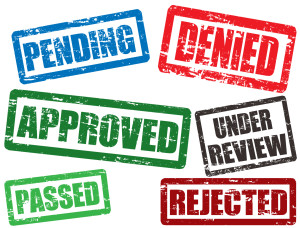 Medications used to treat pulmonary arterial hypertension are expensive. Most insurance companies require a prior authorization be obtained by the prescribing physician prior to them paying their portion of the medication cost. The prior authorization process can take anywhere from 1 hour to 14 days depending on the insurance company. Below is an outline of the process for obtaining a prior authorization and steps that the patient can take to make the prior authorization process quicker and easier.
Medications used to treat pulmonary arterial hypertension are expensive. Most insurance companies require a prior authorization be obtained by the prescribing physician prior to them paying their portion of the medication cost. The prior authorization process can take anywhere from 1 hour to 14 days depending on the insurance company. Below is an outline of the process for obtaining a prior authorization and steps that the patient can take to make the prior authorization process quicker and easier.
Process of Obtaining Prior Authorization
- Notification that a prior authorization is needed: Your pulmonary hypertension expert may know that a prior authorization is necessary based on their experience. Once the physician has prescribed the therapy they will have their team work on obtaining the prior authorization. The physician may have you take the script to the pharmacy or send it to the specialty pharmacy so the insurance company has record of it being ordered. Once the pharmacy receives the script and attempts to fill it they will receive a rejection with a message that the medication requires prior authorization. The pharmacy will also reach out to the physician’s office with this information. If the patient has been informed by the pharmacy that the medication needs a prior authorization the patient should also inform the doctor’s office.
- Submission for prior authorization: Usually the nurse coordinators will request the prior authorization from the insurance company via fax or phone. Insurance companies all have different requirements for specific therapies but in general the coordinators will need to supply the patient’s name, date of birth, and pharmacy benefit ID number before opening a prior auth. They will also provide the drug being requested, diagnosis for which it is being prescribed, and pharmacy where it has been ordered. Sometimes they will need to answer specific questions about the diagnosis and how it was made and if any other therapies have previously been tried for pulmonary arterial hypertension. Many insurance companies request that a right heart catheterization and other medical records be faxed to them for review prior to approving the therapy.
- Receive approval or start an appeal: The nurse coordinator will track and monitor their request until they receive an approval. If the medication is denied they will review the denial with the physician and either move forward with ordering an alternative therapy or request an appeal. The appeal process is also very specific for each insurance company but most require a “peer to peer review” requiring that your PH specialists arrange a phone call with the medical director at the insurance company. Once the authorization is approved the nurse coordinator will contact the patient and the pharmacy to make sure the drug is dispensed.
- Reauthorization when prior auth expires: Most prior authorizations are valid for 1 year but can be significantly shorter or longer than that. All of the above steps need to be repeated each time the authorization expires.
How Patients Can Help With the Prior Authorization Process
The most important step a patient can take to help ensure a smooth prior authorization for their medications is to be compliant. Most insurance companies request recent medical records. It is important that these records demonstrate that the patient has been diagnosed with PH, taken medications as they have been prescribed, and followed up with their pulmonary hypertension specialists on a regular basis.
